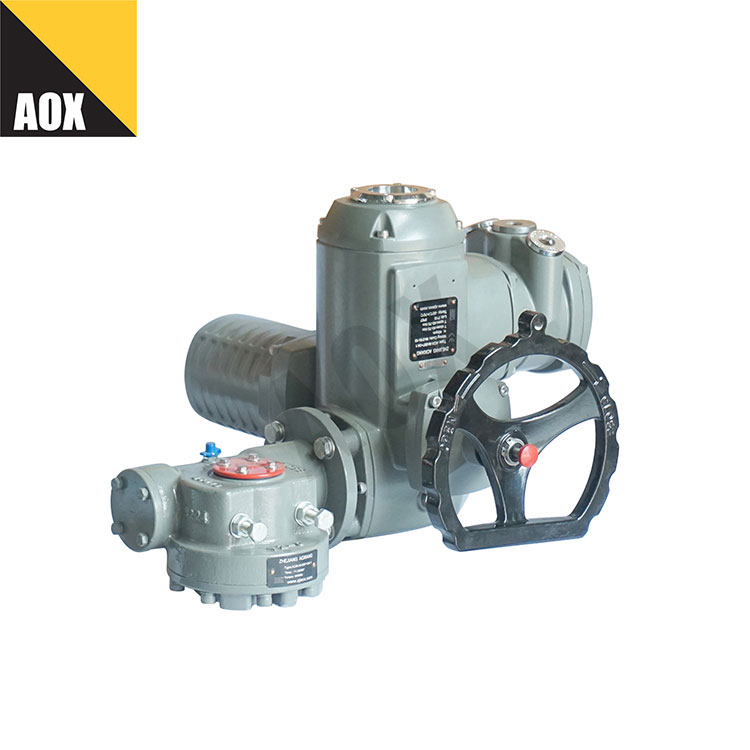
- English
- Español
- Português
- русский
- Français
- 日本語
- Deutsch
- tiếng Việt
- Italiano
- Nederlands
- ภาษาไทย
- Polski
- 한국어
- Svenska
- magyar
- Malay
- বাংলা ভাষার
- Dansk
- Suomi
- हिन्दी
- Pilipino
- Türkçe
- Gaeilge
- العربية
- Indonesia
- Norsk
- تمل
- český
- ελληνικά
- український
- Javanese
- فارسی
- தமிழ்
- తెలుగు
- नेपाली
- Burmese
- български
- ລາວ
- Latine
- Қазақша
- Euskal
- Azərbaycan
- Slovenský jazyk
- Македонски
- Lietuvos
- Eesti Keel
- Română
- Slovenski
- मराठी
- Srpski језик
Explosion Proofelectric Multi Turn Actuators
2024-10-07

What are the benefits of using Explosion Proofelectric Multi Turn Actuators?
Explosion Proofelectric Multi Turn Actuators offer several benefits over traditional actuators, including:
- Compliance with hazardous environment requirements
- Increased safety measures
- Improved efficiency
- Reduced maintenance costs
How can Explosion Proofelectric Multi Turn Actuators be used in the oil and gas industry?
Explosion Proofelectric Multi Turn Actuators can be used in various applications in the oil and gas industry, including:
- Opening and closing pipeline valves
- Controlling choke valves
- Regulating the flow of materials in pipelines
What are some notable features of Explosion Proofelectric Multi Turn Actuators?
Some notable features of Explosion Proofelectric Multi Turn Actuators include their corrosion-resistant properties, ability to operate in extreme temperatures, and long service life. Additionally, they can be customized to meet specific requirements for various applications.
In conclusion, Explosion Proofelectric Multi Turn Actuators are essential components in industries that operate under hazardous and explosive conditions. Their compliance with hazardous environment requirements, increased safety measures, and improved efficiency make them ideal for use in various applications. If you are in need of high-quality Explosion Proofelectric Multi Turn Actuators, contact Zhejiang Aoxiang Auto-Control Technology CO.,Ltd. Our company is a leading manufacturer of explosion-proof electric actuators with over ten years of experience. Visit our website https://www.aox-privod.com for more information, or contact us at zjaox07@zjaox.com.
Research Papers
1. M. T. Al-Hamadani, A. N. Hussain, and R. Ahmad, “Fault diagnosis of multilayered polymer electrolyte membrane fuel cell using support vector regression and artificial neural network,” International Journal of Energy Research, vol. 43, no. 12, pp. 6053–6081, 2019.
2. S. M. Shanshool, A. H. El-Mesery, and M. A. Adly, “Modeling and optimization of photovoltaic water pumping systems for the southwestern regions of Saudi Arabia,” Journal of Cleaner Production, vol. 229, pp. 198–219, 2019.
3. H. Zhang, Z. Cheng, Q. Wu, and P. Li, “Experimental and numerical investigation of heat transfer and temperature distribution of 18650 lithium-ion batteries,” Journal of Power Sources, vol. 438, pp. 1-11, 2019.
4. M. A. Karim, “Experimental study of ammonia-based adsorption chiller using activated carbon/methanol,” Journal of Thermal Analysis and Calorimetry, vol. 139, no. 1, pp. 497-507, 2020.
5. N. K. Sharma and R. K. Shukla, “A review on soil thermal conductivity estimation methods for underground thermal energy storage (UTES) systems,” Renewable and Sustainable Energy Reviews, vol. 80, pp. 621-637, 2017.
6. S. A. Ghenai and M. A. Habib, “Development and testing of a solar-driven adsorption cooling system using activated carbon and methanol as working pair,” Journal of Thermal Analysis and Calorimetry, vol. 139, no. 3, pp. 1655-1668, 2020.
7. A. T. Dastgeer, R. G.H. Prince, and S. Mekhilef, “Investigation of partial shading on maximum power point tracking in photovoltaic systems: a review,” Renewable and Sustainable Energy Reviews, vol. 105, pp. 249-280, 2019.
8. D. Ammar, T. H. Mohammed, and M. S. Isa, “Modelling, simulation and validation of single-phase transformer using FEM and PSCAD/EMTDC,” Journal of Electrical Systems and Information Technology, vol. 6, no. 1, pp. 1–16, 2019.
9. E. Farid, L. T. H. Anh, and T. T. Ngoc, “Optimal sizing of grid-connected photovoltaic systems based on different criteria using genetic algorithm,” Journal of International Council on Electrical Engineering, vol. 9, no. 4, pp. 914-923, 2019.
10. M. E. Hossion, J. Singh, and M. R. Alam, “Experimental and modelling investigation of a double-pass photovoltaic thermal (PVT) air collector using water,” Journal of Energy Storage, vol. 17, pp. 51-62, 2018.



